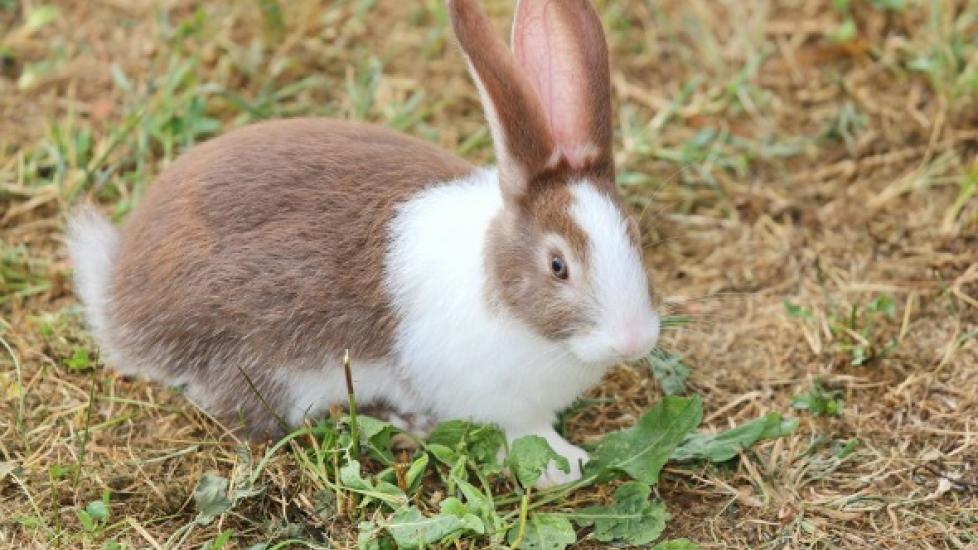Inflammation of the Middle and Inner Ear in Rabbits
Otitis Media and Interna in Rabbits
Otitis media and otitis interna are conditions in which there is inflammation of the middle and inner ear canals (respectively) in rabbits. It is most commonly caused by a bacterial infection that has spread from the external ear cavity into the inner ear. In the initial stages, the rabbit may feel nausea related to the ear infection and may demonstrate loss of appetite with refusal of food. It may also affect the rabbit's nose and the throat if the infection spreads.
The ears, the vestibular system (inner ear balance mechanism), the nerves in the ear area, and the eyes may all be affected. This is one of the most common disorders seen in pet rabbits overall, but lop-eared rabbits are more likely to show signs of otitis externa (inflammation of the outer ear).
Symptoms and Types
Symptoms are related to the severity and extent of the infection; they may range from none to mild discomfort to signs of nervous system involvement. Other common signs associated with otitis media and interna include:
- Sudden loss of balance, dizziness
- Head tilting to one side
- Lean or roll toward the affected side (this may appear similar to a seizure)
- Anorexia or teeth grinding due to nausea
- Reluctance to move, digging at the cage floor
- Pain – reluctance to chew, shaking the head, pawing at the affected ear, holding the affected ear down
- Facial nerve damage - facial asymmetry, inability to blink, discharge from eye, ipsilateral head tilt (tilting head on affected side)
- Discharge from ears, dry eyes, throat infection
Causes
If only one side is affected, it may be due to foreign bodies, trauma, and tumor. However, bacterial infection is the most common cause of otitis media and interna. Other underlying causes include:
- Candida, a fungal yeast
- Ear mite infestation
- Vigorous ear flushing can lave tissue irritated and susceptible to infection
- Impaired immune system (due to stress, corticosteroid use, concurrent disease, debility) also increases susceptibility to bacterial infections
- Ear cleaning solutions may be irritating to the middle and inner ear (avoid using any internal medications of fluids if the eardrum is ruptured)
Diagnosis
There are several causes for ear infection, and your veterinarian will need to distinguish from other causes of head tilt and rolling episodes. You will need to provide a thorough history of your rabbit's health leading up to the onset of symptoms. A complete blood profile will be conducted, including a chemical blood profile, a complete blood count, and a urinalysis. Your doctor will also take a tissue sample. The results of these tests may show an underlying bacterial infection that has migrated to the ear, a fungal yeast infection, or the presence of parasites.
Visual diagnostics may include X-rays of the ear and face region to look for evidence of foreign materials that have gotten lodged in the ear canal, or tumors that are blocking the canal. A computed tomography (CT) can be used for better resolution and visualization if the X-ray does not give your doctor enough information.
Treatment
Inpatient treatment will be advised if the infection is severe, or when neurological signs are seen. Fluid and electrolyte therapy will be given until the rabbit stabilizes, with bacteria specific antibiotics administered orally, and also applied directly in the ears if the eardrum has not ruptured. Antifungal medications will be administered of the infection is found to be caused by yeast. If the ear canal or eardrum has been severely damaged, it is possible that surgery will need to be performed to remove the ear canal.
Your rabbit will be discharged from inpatient care once it is stable, or if the infection was not severe, your doctor will prescribe the appropriate medications for you to administer at home. Generally, a warm saline solution can be used to clean and disinfect the ears, followed by gentle drying with a swab. Unless your veterinarian has instructed you otherwise, you should not put any solution or material inside the rabbit's ears.
